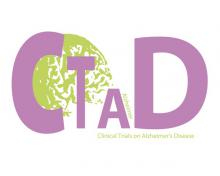Orthostatic hypotension (OH) is a common problem in older people. Although it is indicated that OH can be a marker of frailty there are no studies that evaluate this relationship in hospitalized patients. The aim of the study was to assess the prevalence of OH in geriatric ward patients and its association with health and functional ability characteristics and patients’ frailty status. Design and setting: A retrospective cross-sectional cohort study was conducted among patients aged 60 or over hospitalized in the geriatric ward. Participants: Patients’ medical records were analyzed and those with Active Standing Test (AST) results were included in the study. Measurements: Orthostatic hypotension was defined by a drop in blood pressure of at least 20mmHg for systolic blood pressure and at least 10mmHg for diastolic blood pressure within 3minutes of standing up in AST. The database included sociodemographic characteristics, nutritional, functional and cognitive state, comorbidity and medical treatment. Frailty syndrome was diagnosed with Clinical Frailty Scale. Correlations with OH were counted and multivariable logistic regression models were built. Results: 416 patients were hospitalized in the study period and 353 (84.9%) were included, 78 (22.1%) men and 298 (84.4%) 75+ year-old. AST was not available in patients significantly more dependent in ADL and more frail. OH was diagnosed in 57 (16.2%) patients, significantly more frequently in men (systolic- 45,5%, systolic-diastolic40,0%). The significant independent predictors of OH were lower diastolic blood pressure at admittance, nutritional risk in MNA-SF, Parkinson disease, α1-blockers, neuroleptics and memantine, and not the frailty syndrome diagnosed with Clinical Frailty Scale. Conclusions: OH affects a significant percentage of patients in the geriatric ward, although this problem may be underestimated due to limitations in the performance of AST in very frail and functionally dependent patients.
(1) Z.B. Wojszel, A. Kasiukiewicz, L. Magnuszewski, J Nutr Health Aging. 2019;23(6):509-517



